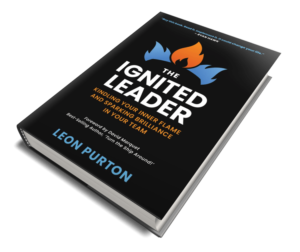
The late night infomercial that helped Mel Robbins become famous
Mel Robbins is now the most widely booked female Keynote speaker, author of two best selling novels, collaborated with Audible on two learning series, recently filmed a syndicated day-time talk show with Sony Entertainment and presented at TED with her talk now having over 20 million views.
But, not that long ago she was unemployed, drinking too much, overweight and looking down the barrel of a marriage separation. She wanted to change, but couldn’t work out how. She would put her gym gear near the door before bed, but in the morning when the alarm went off, her anxiety and self-doubt would kick in and she would hit snooze.
Then, one night, staying up late watching infomercials she saw an advertisement that used a Space Shuttle launch. You know the one; the shuttle, flames starting to come out from under it, the audible countdown from 10 seconds, as it reaches zero they say ‘LIFT-OFF’ and the Shuttle leaves the ground on its journey. Mel thought to herself, “what if I was a Rocket”.
This infomercial created a thought bubble that triggered a change with Mel; she was trained as a criminal defence attorney, then worked as a legal correspondent with CNN, but was now currently unemployed and procrastinating her way to nowhere. Struggling to get out of bed each day, she thought she could try this Rocket idea. So, that night she positioned her gym gear and set her alarm, the following morning the alarm went off. She knew what to do, she new how to do it, but she still didn’t want to do anything. So, she started to count backwards, out loud, from 5 and when she got to zero she got up and put her gear on.
That simple act was enough to get her out of the house and on the road for a walk. She didn’t want to do it, but she did it anyway.
What Mel Robbins had accidentally stumbled upon was something neuroscientists call meta-cognition. She had accidentally re-engaged her prefrontal cortex to override the part of her brain that squashes ideas, but she didn’t know that.
She had success in a many life areas using this simple principle, so she started to tell her friends, and they had success as well.
Eventually she had to find out why.
Procrastination and Motivation
Here’s the thing. Procrastination is genetically encoded. That’s right, motivation does not even exist, the thing we call motivation is just your ability to dampen you bodies encoding for procrastination. Procrastination is a behavioural coping mechanism, so we can avoid the stress we associate with the task we are avoiding.
We are not avoiding the task — we are avoiding the stress we associate with the task. The stress of not knowing where to start, the stress of the deadline, the stress of the uncertainty of the outcome, the stress of realising you can’t actually do it. All of these stressor’s are freaking your brain out, and you are losing control of the rational part, the decision making part. It is scary, so your brain squashes the idea, protects you.
Good work Brain. Thanks heaps. Always looking out for me.
So if your brain is designed to kill ideas that we have some associated stress with, why do we do anything at all?
Let me say it again —
We are not avoiding the task, we are avoiding the stress we associate with the task!
Knowing this is a lifesaver, it allows you to suspend judgement on yourself. Instead, focus on why you are feeling stressed about the task. But don’t get stuck procrastinating about why you are procrastinating.
The trick is, to regain your cognitive control, Mel calls this step ‘Regaining your Locus of Control’. When you are stressed, when the stress hormone (cortisol) is elevated, your prefrontal cortex shuts down. Doing something that requires thinking, and is unnatural to your brain, can reactivate it.
Something like counting backwards.
When you consciously choose to count backwards, then act, you re-engage your prefrontal cortex. You let your brain know you are in control of that stress and it stops freaking out. The key is that you have to act when you get the impulse to do that task. Your brain will squash the idea to reduce the stress if you don’t.
Another famous author who has studied a similar concept is Charles Duhigg on ‘The Power of Habit”. In it he talks about habit formation and the parts of the brain that hold your habit patterns. Mel Robbins work taps into this principle.
The Steps to beat Procrastination
You just need to count, then move in the direction of your desired action and directly against that stress you are feeling. This is enough to create a habit loop; Stimulus, Action, Reward.

Imagine this scenario;
You are playing in the front yard with your family, and you see across the street a small child running after a ball, and a smile creeps onto the corner of your lips. Out of the corner of your eye you see a car coming down the street and your brow starts to furrow, the smile starts to fade. Your brain does a series of calculations and runs through scenarios, you assess you need to move to protect your neighbours child. This type of decision is processed in moments, the stress of not taking action far out weighing the need to think about it further. This is a prefrontal cortex decision.
Now, imagine this scenario;
You got some adverse feedback on your last performance report, you don’t really know if it is fair or how to process it. You use to have a work colleague that you would of talked about this to, but they left last year for a new job. You haven’t really spoken to them since. However, the first thing that came across your mind when you got the feedback was you should reach out to them. You don’t do it, you are worried that they will not be interested in what is going on, they are too busy to hear from you. You are worried that they will agree with your boss, and tell you that you really do not do that well. So you keep putting it off, the thought keeps coming up, but you continue to squash it — you hope the feeling will go away. Your prefrontal cortex is shut down, your brain is trying to push you away from that stress you are feeling. So you procrastinate.
Do both of these sound familiar?
Here are the steps;
- Have an impulse, but don’t want to do anything about it.
- Count backwards from 5 to 1.
- Take an action in the direction of your impulse.
That’s it.
You don’t need to finish the whole thing at once, but you do need to create a habit loop that you can act on that positive impulse — you need to start. The way you can do it is counting….
Here’s the thing — you will never ‘feel’ like doing it. You can’t back yourself to ‘find’ motivation. You have to choose to act, and this trick will help you.
Here is Mel explaining the science of the 5-second rule (not the one about food)…
Here is Mel’s TEDx talk about how you crew yourself over.
Writer of things, learning about leadership, personal development and growth. Originally published at leonpurton.com.


